How to properly load a pallet is also essential to prevent the goods from falling over. Pallet and container standardization entails an advantage that streamlines the way load units are put together, since boxes can be stacked one on top of the other, making best use of available space.
The correct stacking of boxes on pallets is fundamental for guaranteeing the stability of the whole structure. For this reason, the trend is towards the production of cardboard boxes that are submultiples of 47.2 in x 31.5 in (the measurements of a europallet) to make the best possible use of the surface area of the pallets.
Boxes are normally stacked on pallets in one of the two ways illustrated below.
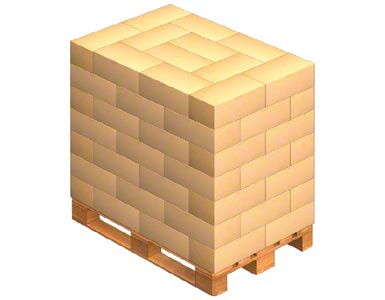
Staggered boxes.

Stacked boxes.
In the first example, a 15.7 in x 7.9 in box has been chosen, while in the second example the box is 15.7 in x 11.8 in. Both measurements are submultiples of 47.2 in x 31.5 in, so full advantage is taken of the space. The first approach is more stable as the boxes are stacked in a staggered fashion. When the boxes are staggered, it is recommended that they be strapped or shrink-wrapped. This is essential if the boxes are stacked.
It must be remembered that the layers may have a chimney-like empty space, depending on the dimensions of the boxes.
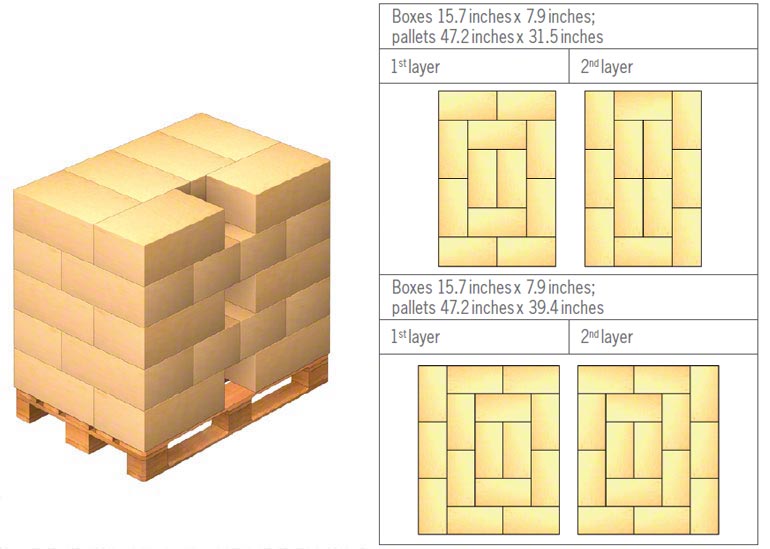
Examples of load unit layouts, using staggered layers of boxes that are submultiples of the pallet dimensions.
Even when the goods are shrink-wrapped, it is still fairly common for packages to shift due to movements during transportation and handling of the pallets. As a result, there is an increase in the dimensions of the load unit, generally in the upper part. Some examples are as follows:
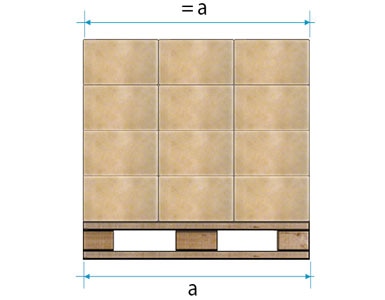
A correctly stacked pallet.
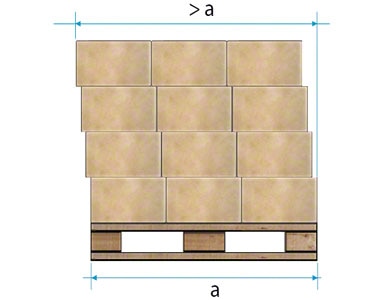
Sideways shift.
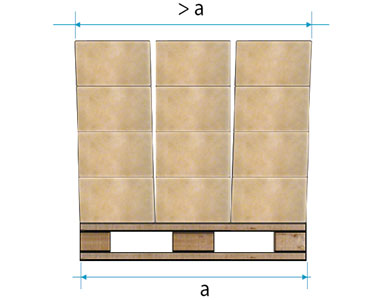
Fan shaped.
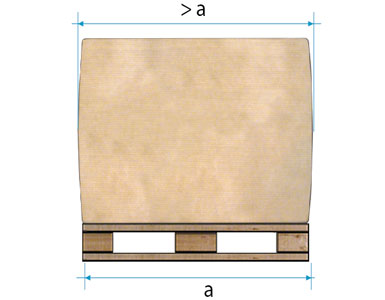
Convex shaped.
When the measurements of the boxes used are not multiples of the pallet's dimensions on which they are stacked, two situations can arise.
The first is the storage capacity of the pallet is reduced, as can be seen in the following example:

The second is that the layer of boxes is wider than the pallet. In this case, this particular feature must be taken into account and storage positions must be designed to allow a sufficiently wide space.

